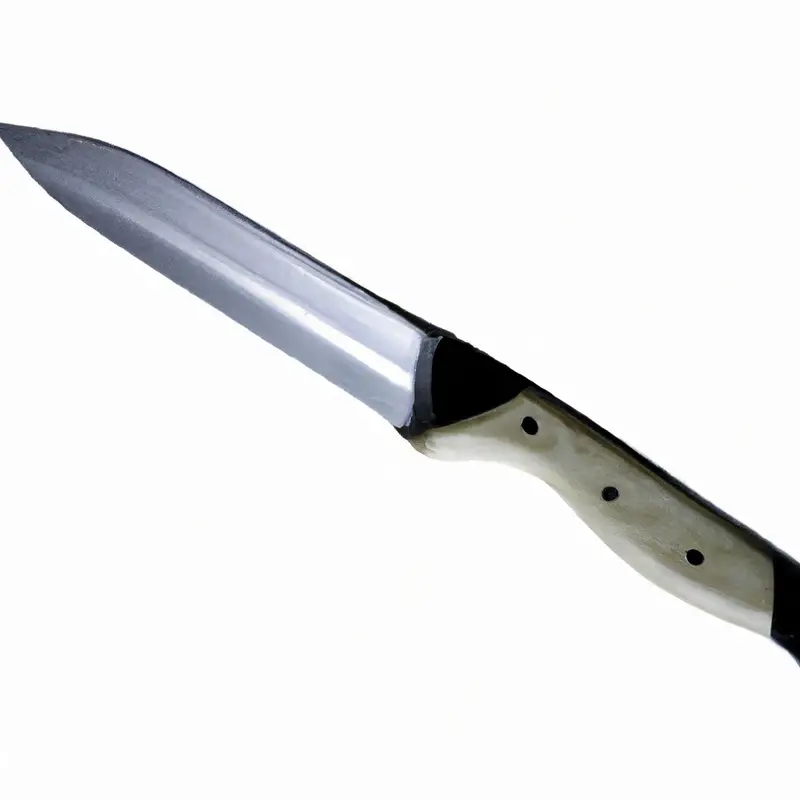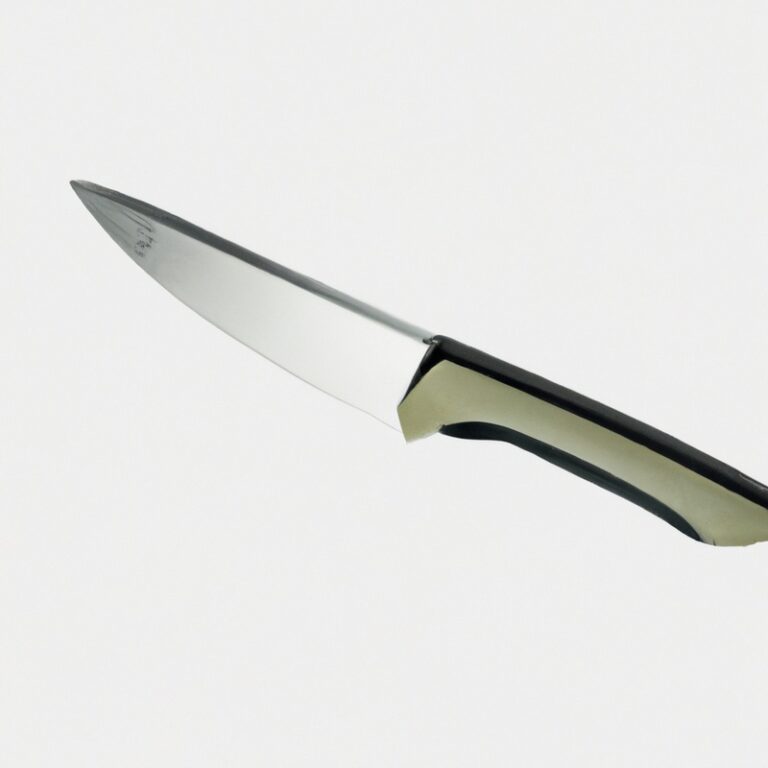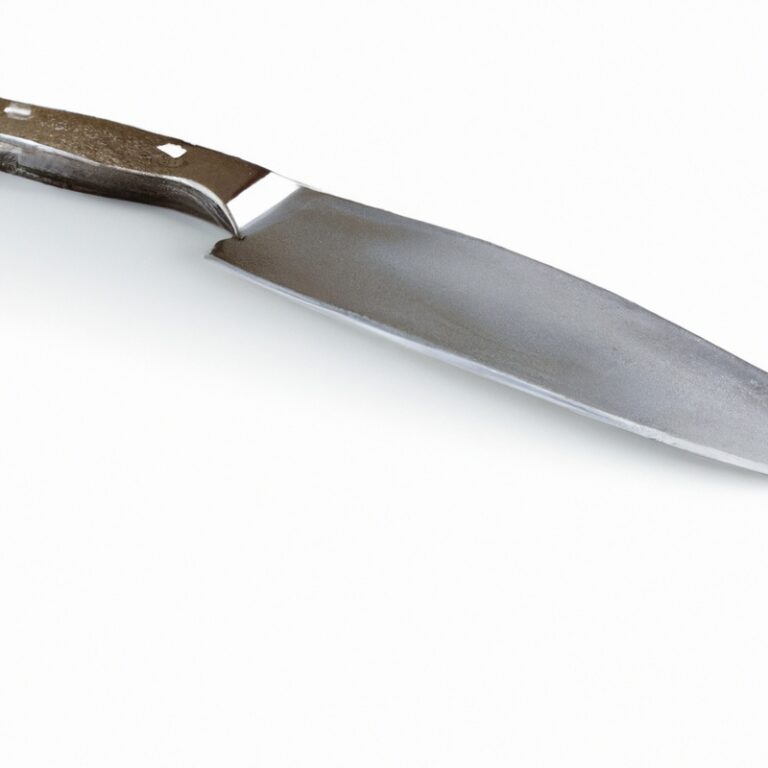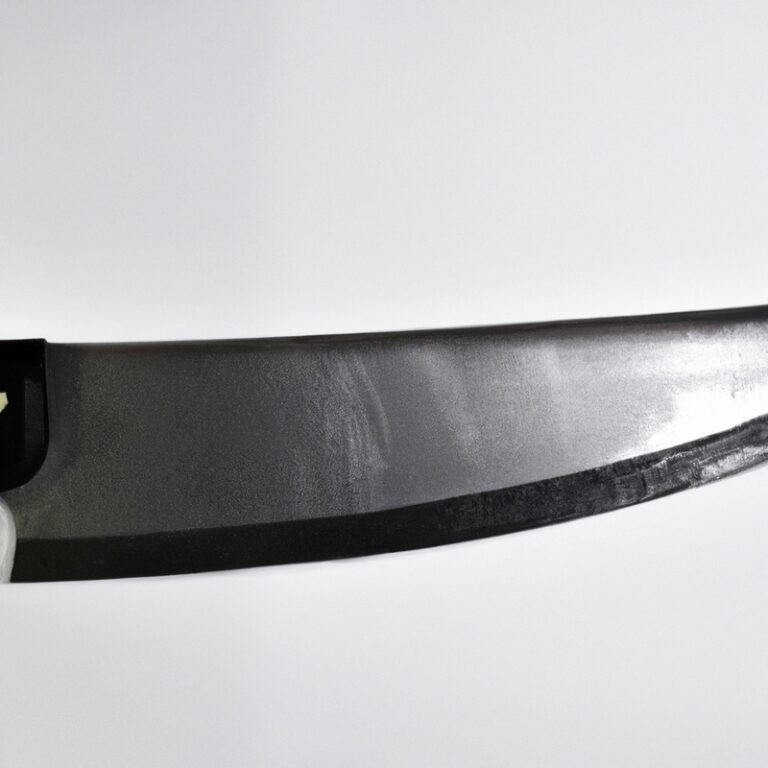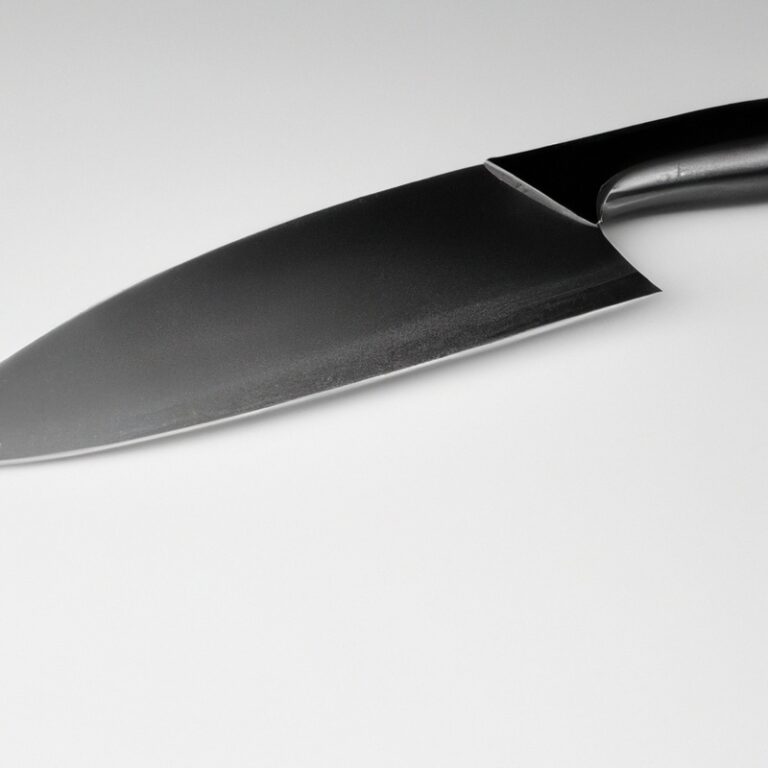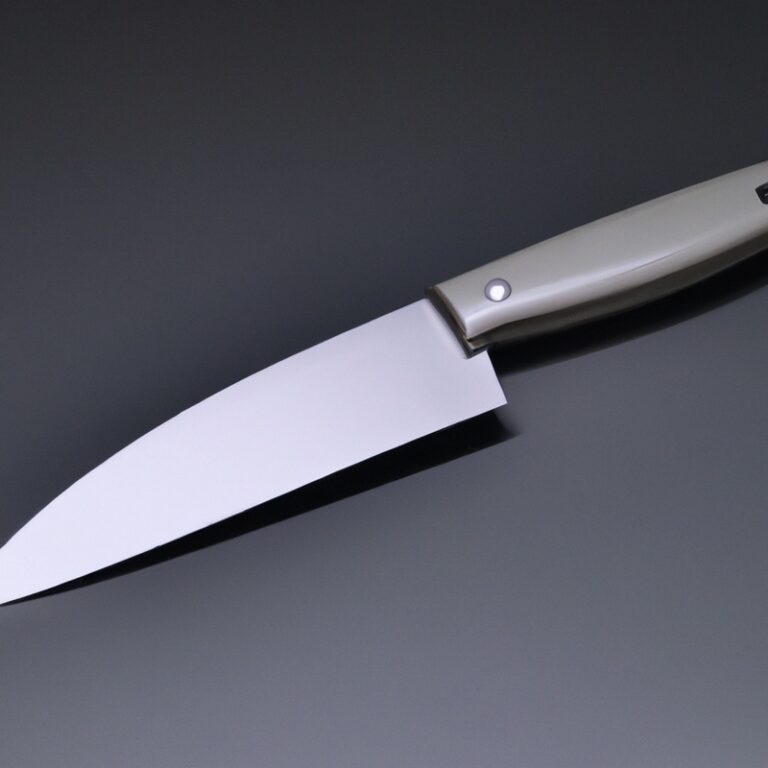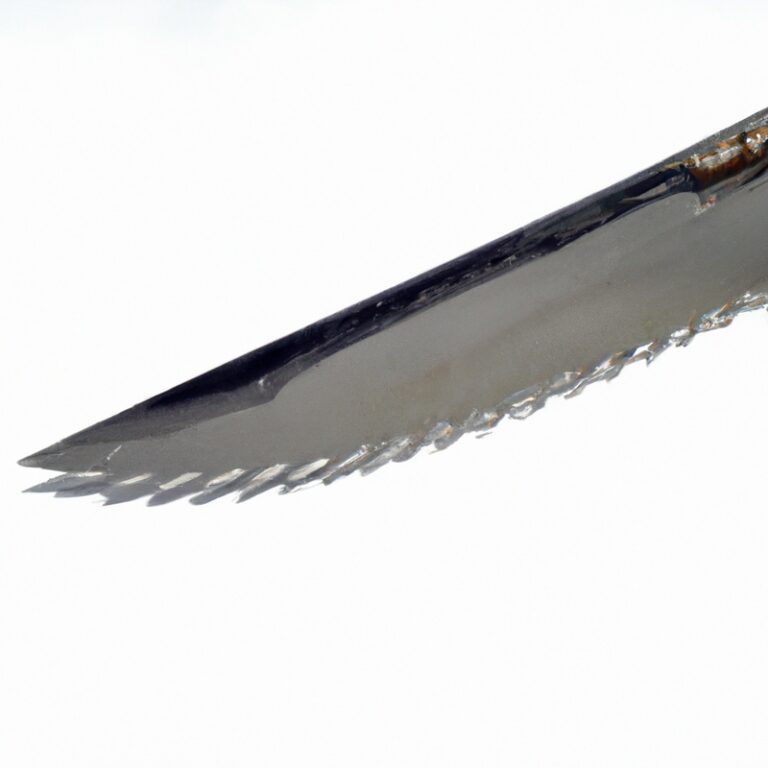What Are The Key Features To Look For When Selecting a Serrated Knife For Everyday Use?
Key Takeaways:
- Blade design: Look for a serrated knife with deep, evenly spaced teeth for optimal cutting performance.
- Material quality: Choose a serrated knife made of high-quality stainless steel for durability and long-lasting sharpness.
- Handle comfort: Ensure the knife has an ergonomic handle that provides a comfortable and secure grip during use.
- Size and weight: Consider the size and weight of the knife to find one that suits your preferences and feels balanced in your hand.
Is there anything more frustrating than trying to slice through a loaf of bread or a juicy tomato, only to end up with a squished mess? We’ve all been there.
That’s why finding the perfect serrated knife for everyday use is essential.
But with so many options out there, how do you know what to look for? Fear not, because I’m here to demystify the process for you.
In this article, I’ll walk you through the key features to consider when selecting a serrated knife.
From blade length and material to handle design and maintenance, we’ll cover it all. So, let’s cut to the chase and find the perfect serrated knife that will effortlessly glide through any task in the kitchen.
| Key Features | Description |
|---|---|
| Blade Material | The type of steel used in the blade determines its durability, sharpness, and corrosion resistance. High-carbon stainless steel is often recommended for serrated knives as it retains its edge for longer and resists staining. |
| Blade Length | The length of the blade should be suitable for your needs. A longer blade allows for longer and smoother cuts, while a shorter blade provides more control and maneuverability. |
| Serration Pattern | The serration pattern on the blade can vary. Common patterns include fully serrated, partially serrated, or combination edges. Choose a pattern that aligns with your cutting tasks and preferences. |
| Handle Design | The handle should be comfortable to hold and provide a secure grip, even when wet. Look for handles made of materials like *resistant-to-slippage rubber* or *ergonomic polymer*. |
| Weight and Balance | A well-balanced knife with an appropriate weight allows for precise cutting and reduces hand fatigue. Consider a knife that feels comfortable in your hand and has a balanced weight distribution. |
| Ease of Maintenance | Check if the knife is easy to clean and maintain. Some serrated knives are dishwasher-safe, while others require manual cleaning. Additionally, look for knives with blades that can be sharpened or resharpened easily. |
What is a serrated knife?
Definition and Overview of Serrated Knives
A serrated knife is a type of kitchen knife that features a serrated or sawtooth edge along the blade. This serrated edge helps to grip and cut through tough surfaces, making it ideal for slicing through bread, tomatoes, and other foods with a hard exterior and soft interior.
Serrated knives are designed to easily penetrate the surface of the food without crushing or squashing it.
They provide a clean and precise cut, minimizing the mess and preserving the shape of the food. Serrated knives come in various shapes and sizes, each with its own specific use and benefits.
Overall, they are a versatile tool in the kitchen for everyday tasks.
Benefits of Using a Serrated Knife
A serrated knife offers several benefits that make it an excellent tool for everyday use.
- Versatile Cutting: The serrated edge allows for precise, smooth cuts on a variety of foods, such as bread, tomatoes, and citrus fruits. It grips the surface, preventing tearing or squishing.
- Effortless Slicing: The teeth of a serrated knife ensure effortless slicing through tough or crusty exteriors, like bread crusts or crispy roasts, without crushing the softer interiors.
- Longevity and Durability: The serrated edge stays sharp for a longer time compared to traditional knives. This not only saves you time on frequent sharpening but also extends the lifespan of the knife.
- User-Friendly: Serrated knives often have comfortable handles that provide a secure grip, reducing the likelihood of accidents while cutting. They are also lightweight, making them easy to maneuver.
Factors to Consider When Selecting a Serrated Knife
Blade Length and Size
When selecting a serrated knife, the blade length and size are important factors to consider. The ideal blade length will depend on your personal preference and the types of foods you plan to cut.
For everyday use, a blade length of around 8 to 10 inches is generally recommended.
This size provides enough versatility for slicing through various ingredients such as bread, fruits, and vegetables. Additionally, a medium-sized blade is more manageable and easier to control, allowing for precise and efficient cutting.
Keep in mind that the size of the knife should also be suitable for your hand size and grip.
Choosing the right blade length and size ensures a comfortable and effective cutting experience.
Blade Material and Quality
When selecting a serrated knife, pay close attention to the blade material and quality. Look for blades made from high-quality stainless steel, as it ensures durability and longevity.
Stainless steel is resistant to rust and corrosion, making it ideal for everyday use.
Additionally, a well-made serrated blade will have sharp teeth that are evenly spaced and properly aligned for efficient cutting and slicing. Don’t forget to check the blade’s overall construction and finish to ensure excellent craftsmanship.
A strong and well-crafted blade will provide you with a reliable and efficient cutting tool for all your everyday needs.
Handle Design and Comfort
When it comes to selecting a serrated knife, handle design and comfort are important factors to consider. The handle should have an ergonomic design that fits comfortably in your hand, providing a secure grip and reducing fatigue during use.
Look for handles made from high-quality materials such as durable plastics or stainless steel.
Additionally, consider the weight and balance of the knife to ensure ease of control and maneuverability. A well-designed handle will enhance your overall cutting experience, making it more enjoyable and efficient.
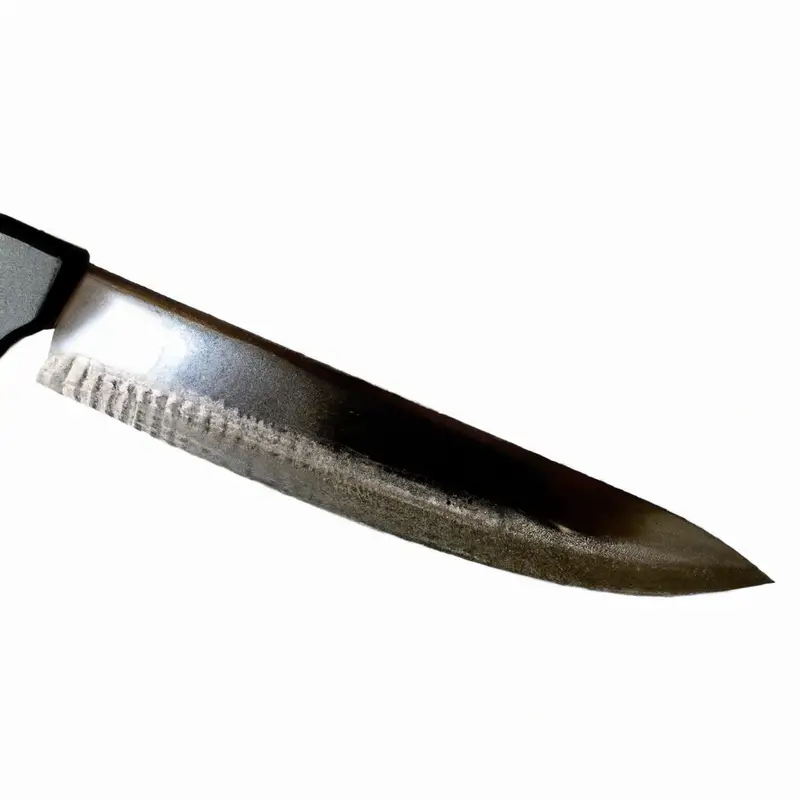
Maintenance and Cleaning
Maintenance and cleaning is important to keep your serrated knife in good condition. After each use, make sure to wash the knife with warm soapy water and a sponge.
Be careful when handling the sharp edges.
Avoid soaking the knife for long periods as it may damage the handle. Dry the knife thoroughly before storing it to prevent rusting.
To maintain the sharpness of the blade, use a honing rod or sharpening stone occasionally.
Regular maintenance and cleaning will ensure that your serrated knife stays sharp and ready for everyday use.
Serrated Knife Types for Everyday Use
Bread and Pastry Knives
Bread and pastry knives are essential tools for cutting and slicing bread, pastries, and cakes. These knives usually have a long, serrated blade that allows for clean and precise cuts without crushing the delicate texture of baked goods.
When selecting a bread or pastry knife, look for a blade length that suits your needs, a high-quality blade material for durability, and a comfortable handle design.
It’s also important to consider maintenance and cleaning requirements to ensure your knife stays in good condition.
Utility and Tomato Knives
Utility and tomato knives are two common types of serrated knives that are perfect for everyday use. Utility knives are versatile and can handle a variety of tasks, such as slicing sandwiches, cutting fruits and vegetables, and trimming meat.
They usually have a medium-sized blade, making them suitable for both precision and general cutting.
Tomato knives, as the name suggests, are designed specifically for slicing through the skin of tomatoes without squishing them. They have a smaller, serrated blade that is sharp enough to cut through the tomato skin effortlessly.
Both utility and tomato knives are essential tools in any kitchen, offering precision and convenience for everyday cutting tasks.
Understanding Serrated Knife Performance
Cutting and Slicing Ability
When it comes to the cutting and slicing ability of a serrated knife, there are a few key factors to consider. Firstly, the teeth of the knife should be sharp and evenly spaced to ensure a clean and precise cut.
Secondly, the length and depth of the serrations play a role in the knife’s performance.
The longer and deeper the serrations, the easier it will be to cut through tough or crusty surfaces. Finally, the overall design and balance of the knife can affect the efficiency and control while slicing.
By choosing a serrated knife with these features, you can ensure a smooth and effortless cutting experience.
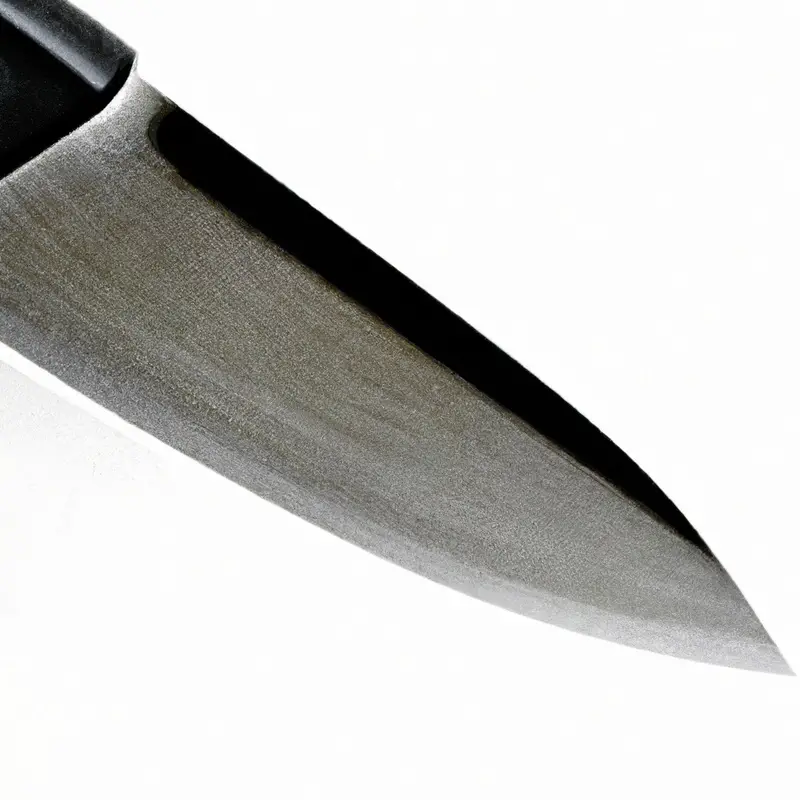
Durability and Longevity
Durability and longevity are key factors to consider when selecting a serrated knife for everyday use. You want a knife that will withstand regular use and stay sharp for a long time.
Look for knives made from high-quality materials such as stainless steel to ensure durability.
Additionally, consider knives with a solid construction and a strong handle for added longevity. Proper care and maintenance will also contribute to the overall durability and lifespan of your serrated knife.
Grip and Control
Grip and control are essential when it comes to selecting a serrated knife for everyday use. A comfortable and secure grip allows for precise slicing and reduces the risk of accidents.
Look for handles with ergonomic designs and textured surfaces that provide a firm hold, even when your hands are wet.
Additionally, consider the weight and balance of the knife as this can affect control during cutting. Remember, a good grip and control not only ensure safety but also enhance your overall cutting experience.
Price Range and Budget Considerations
Mid-Range Options
Mid-range options for serrated knives offer a good balance between quality and affordability. These knives are typically made from high-quality materials that ensure durability and sharpness.
They may not have all the advanced features of high-end options, but they still perform well in everyday tasks like cutting bread, fruits, and vegetables.
Look for brands that offer a good warranty and positive customer reviews. Some popular mid-range options include XYZ knife, ABC knife, and DEF knife.
High-End Options
High-End Options for serrated knives offer top-notch quality and performance. These knives are often crafted with premium materials such as high-carbon stainless steel, which ensures long-lasting sharpness and durability.
High-end knives also come with ergonomic handles for a comfortable grip and precise control.
Additionally, they may feature unique design elements such as full tang construction or sleek aesthetics. Investing in a high-end serrated knife ensures exceptional cutting power and a knife that will last for years to come.
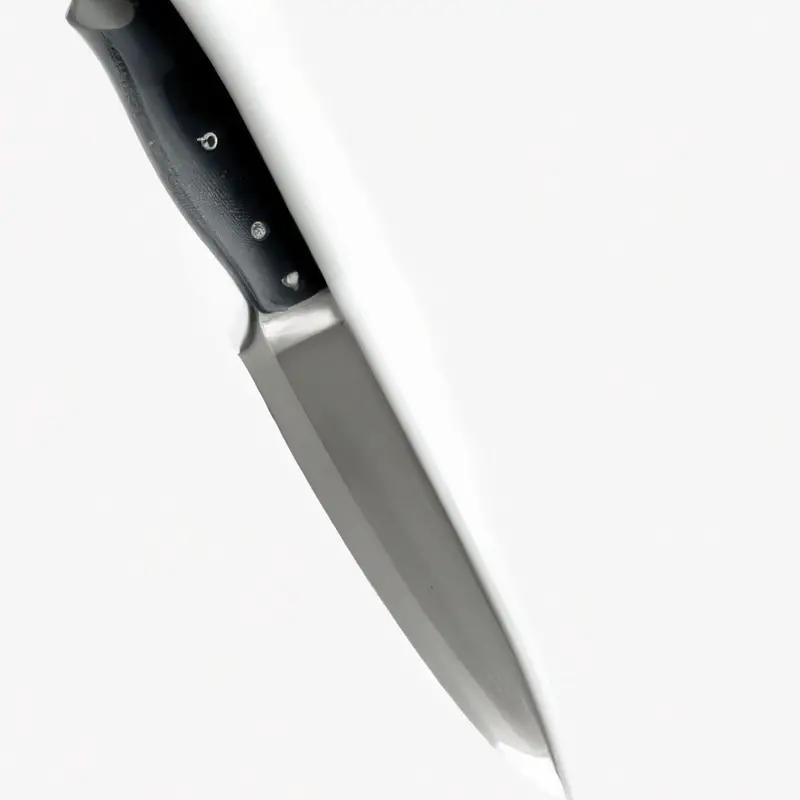
Budget-Friendly Choices
Budget-Friendly Choices: When selecting a serrated knife on a budget, there are a few options to consider. One option is to look for knives made from stainless steel, as they are often more affordable compared to high-end materials.
Another option is to choose a serrated knife with a slightly shorter blade length, as longer blades tend to be pricier.
Additionally, consider opting for a knife with a simple and functional handle design, as more elaborate handle materials can increase the cost. By keeping these factors in mind, you can find a budget-friendly serrated knife that still meets your everyday cutting needs.
Frequently Asked Questions (FAQs) about Serrated Knives
Are serrated knives suitable for all types of food?
Serrated knives are not suitable for all types of food. While they excel at cutting through crusty bread and delicate pastries, their jagged edges can damage the texture and appearance of softer items like fruits and vegetables.
For these foods, a smooth-edged knife is recommended for precise slicing.
Serrated knives are also not ideal for tasks that require a straight, clean cut, such as filleting fish or carving meat. It’s important to have a variety of knives in your kitchen to ensure you have the right tool for each task.
How often should a serrated knife be sharpened?
Serrated knives don’t require frequent sharpening like straight-edged knives. However, they will eventually dull over time with regular use.
The frequency of sharpening a serrated knife will depend on how often you use it and the type of food you cut.
As a general guideline, consider sharpening your serrated knife once or twice a year for regular home use. If you use it frequently or are cutting tough or fibrous foods, you may need to sharpen it more often.
Remember to use a specialized serrated knife sharpener or send it to a professional for sharpening to maintain its unique blade pattern.
Can serrated knives be used for other tasks apart from cutting bread?
Absolutely! Serrated knives can definitely be used for more than just cutting bread. Their unique toothed-edge design makes them great for slicing through tough-skinned fruits and vegetables like tomatoes and melons.
They can also be used for cutting through soft foods like cakes and pastries without crushing or squishing them.
Additionally, serrated knives are useful for tasks like trimming meats and even carving roasts. Their sharp teeth provide excellent grip and control, making them versatile tools in the kitchen.
So, don’t limit your serrated knife to just bread – explore its potential and make the most out of it!
Final Verdict
When selecting a serrated knife for everyday use, there are several key features to consider. The blade length and size should be suitable for the tasks at hand, while the blade material and quality should ensure durability and longevity.
The handle design and comfort are important for a secure grip and control during use.
Proper maintenance and cleaning are also crucial for maintaining the knife’s performance. Considering these factors, you can confidently choose a serrated knife that meets your needs in the kitchen.

